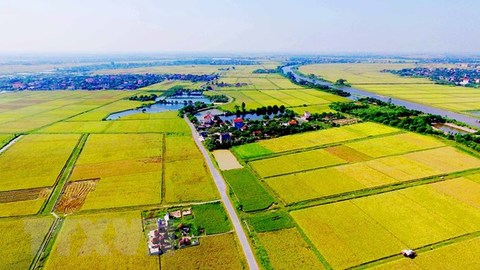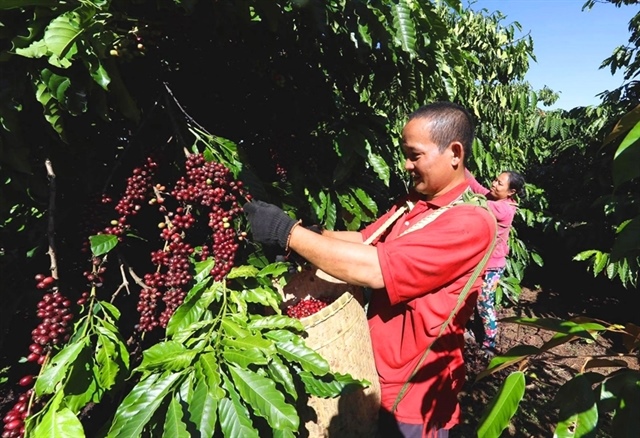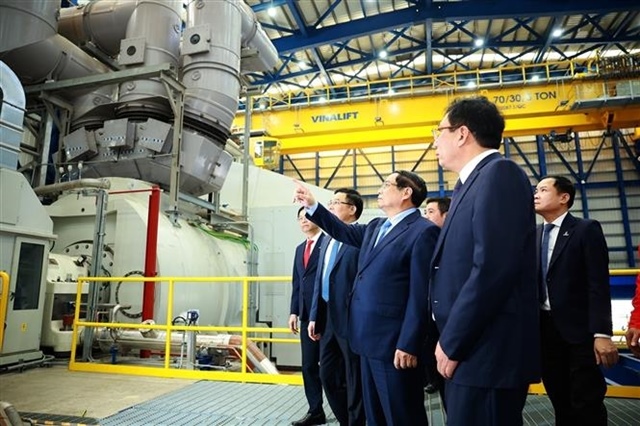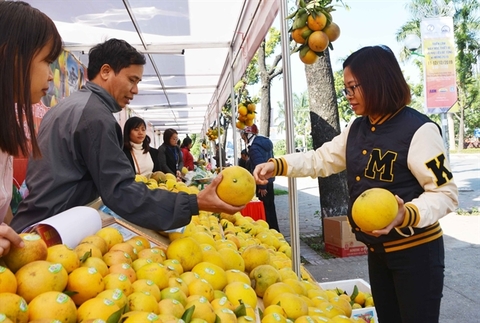VN needs policies to develop agricultural land market
VN needs policies to develop agricultural land market
Viet Nam was in urgent need of policies to develop a transparent and sustainable agricultural land market to attract more investment in the farming sector, according to the Viet Nam Real Estate Association. 
Do Viet Chien, the association’s general secretary, said at a conference on Thursday the definition of the agricultural land market in Viet Nam remained vague and lacked consistency, which was hindering agricultural development and discouraging investment in the sector.
“We need to introduce policies to build a transparent and consistent agricultural land market to fully exploit land resources,” Chien said.
According to Tran Dinh Thien, former director of the Central Institute of Economics, Viet Nam was seeing an increasing number of large, modern firms in the agricultural sector, instead of individual farmers and farming households.
Thien cited statistics that 2,750 new firms operating in agricultural production were founded in 2019, up by 25 per cent over the previous year, bringing the total number of agricultural firms to 12,600, or 1.8 per cent of the total.
Many invested in high-tech agriculture, such as Vinamilk, TH, Dong Giao, Nafoods, Dabaco, Masan, Thaco, Lavifood, Ba Huan and Bien Dong.
Forming agricultural value chains also required large-scale land for production, Thien said.
He said the sector was an advantage for Viet Nam, so it was necessary to develop the agricultural land market.
Policies should be developed to create favourable conditions for firms to invest in hi-tech agricultural production, Thien said.
Le Xuan Nghia, former chairman of the National Financial Supervisory Committee, said Viet Nam’s agricultural land market lacked transparency and stability.
Nghia pointed out that unclear land planning, coupled with rapid urbanisation which required the conversion of agricultural land into land for other purposes, often triggered speculation.
In addition, most transactions involving agricultural land were not conducted via brokerages, making the market less transparent.
Viet Nam did not have insurance policies for agricultural land ownership, Nghia said.
In Viet Nam, it's difficult for farmers to use agricultural land as a guarantee to borrow money from banks, reflecting that agricultural land is not regarded as an true asset.
Agricultural land transactions in Viet Nam are mainly between farmers or between farmers and enterprises.
Transactions between farmers and farmers are often small scale while transactions between farmers and enterprises are relatively unpopular because of a number of difficulties such as disagreements in land prices and unclear land ownership rights. .
Nghia said agricultural land should be recognised as an asset, which could be used for a mortgage. In addition, Viet Nam should have policies that insured ownership rights – an important factor to implementing transactions.
According to senior economic expert Can Van Luc, Viet Nam should review the way it managed agricultural land with regard to the country’s food security strategy and rice export policy.
Price frames for agricultural land should also be adjusted to approach market value, Luc said, adding that the amount time permitted to exploit agricultural land should be extended from the current 50 years to 70 or even 99 years.
Enriching the national database on land in general and agricultural land in particular was also of critical importance to ensuring the effective management and exploitation of land resources, Luc said.
The country also needed to clear tax policies for agricultural land, he said. For example, tax breaks for agricultural land transactions should be offered to encourage the development of the market.
Most importantly, Viet Nam should encourage land accumulation, in which farmers contributed their land as a type of capital contribution, Luc said.
Agricultural land accounts for 39.5 per cent of the country’s total area.



















